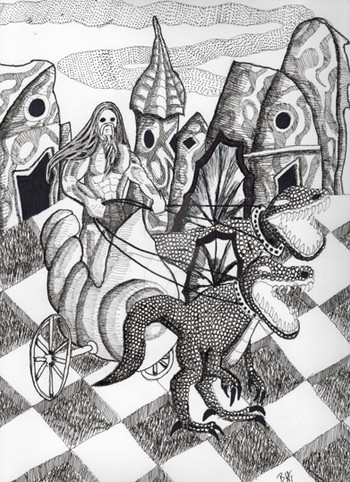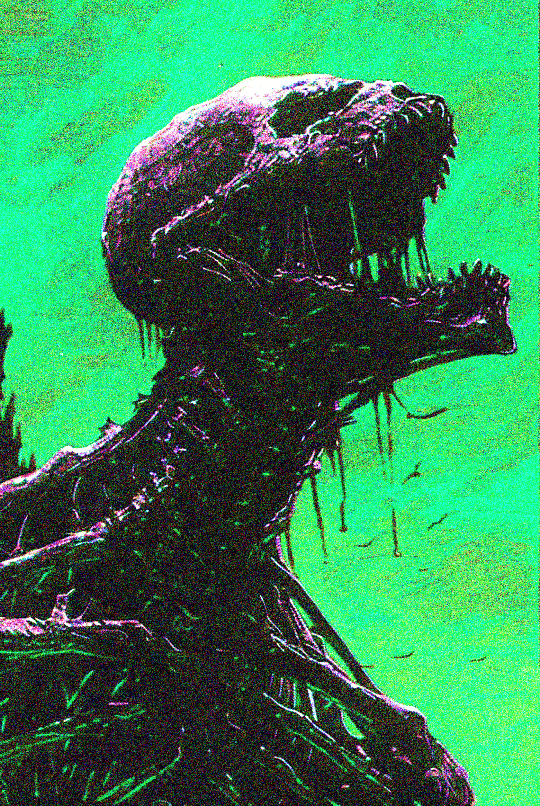HOME | DD
 DrPolaris — The Temperate Forests of Patagonia
DrPolaris — The Temperate Forests of Patagonia

#dinosaurs #speculativeevolution #speculativebiology #speculativezoology
Published: 2018-12-04 13:44:39 +0000 UTC; Views: 10977; Favourites: 152; Downloads: 41
Redirect to original
Description
During the Middle Eocene, the southern half of South America was covered by temperate rainforests with an understory of ferns, similar to those found in modern New Zealand and Tasmania. There are a number of animals foraging on the ground:1. The 1m long, short faced carnivorous Notosuchian Cifellisuchus (Centre left). This patient ambush hunter has long, straight limbs, a smooth covering of dark scales and an almost cat like skull. It has caught a tenrec-like basal Atlantogenatan in its jaws and is now running away to eat its prize in peace.
2. There are a whole host of Elasmarian Ornithopods present. A group of three Mimosa cambrensis (2m long, slender animals covered in a simple coat of fluffy protofeathers and fast runners) browse on some ferns (Centre right). A 3m long. semi-bipedal Fontanasaurus walks nearby (Centre left). This animal is quite bulky, with its back and tail covered with a smattering of osteoderms. A stocky, short tailed Rawsonia is biting some rotten wood off of a log (Centre bottom). This animal is only 2m long, with an unusually heavy skull and a sharp beak. It is bipedal and very vaguely resembles a basal Ceratopsian.
3. The Notoraptoran Belluraptor (a 2.5m long Troodontid descendant with an omnivorous diet).
3. A few small mammals forage on the moist forest floor. There is the hamster like Gondwanathere Zastylodon (hiding behind the log), the long tailed, Hyrax-like Mesungulatoid Patagohyrax (bottom left) and the basal atlantogenatan placental Psalogale, a rat sized scratch digging insectivore (Bottom centre).
4. In the overhanging trees, there are three Metatherians. The first is the brush tailed possum-like gnawing herbivore Britodolops (Top centre). This animal has a long prehensile tail and tawny brown fur. The second is the basal omnivorous Marsupial Argentodelphis (Top left), which strongly resembles a modern opossum and the last is the tiny, arboreal Veridogale (an insectivore similar to modern small dasyurids) and is, incidentally, very cute.
Thanks to Sheather888 for the artwork.
Related content
Comments: 5

so what groups would the notosuchian descend from? Since there were several groups of notosuchians present in south america by the end of the cretaceous.
👍: 0 ⏩: 1

I see you described it as a Staurikosuchoid, but what group of notosuchians did they descend from? Or do we just not know?
👍: 0 ⏩: 1

The first members of this group appear in the fossil record during the early Eocene at Itaborai. They are probably descended from Uruguaysuchus like ancestors and therefore sit near the base of notosuchia.
👍: 0 ⏩: 1

So they most likely are related to(if not descended from) Araripesuchus?
👍: 0 ⏩: 1

























